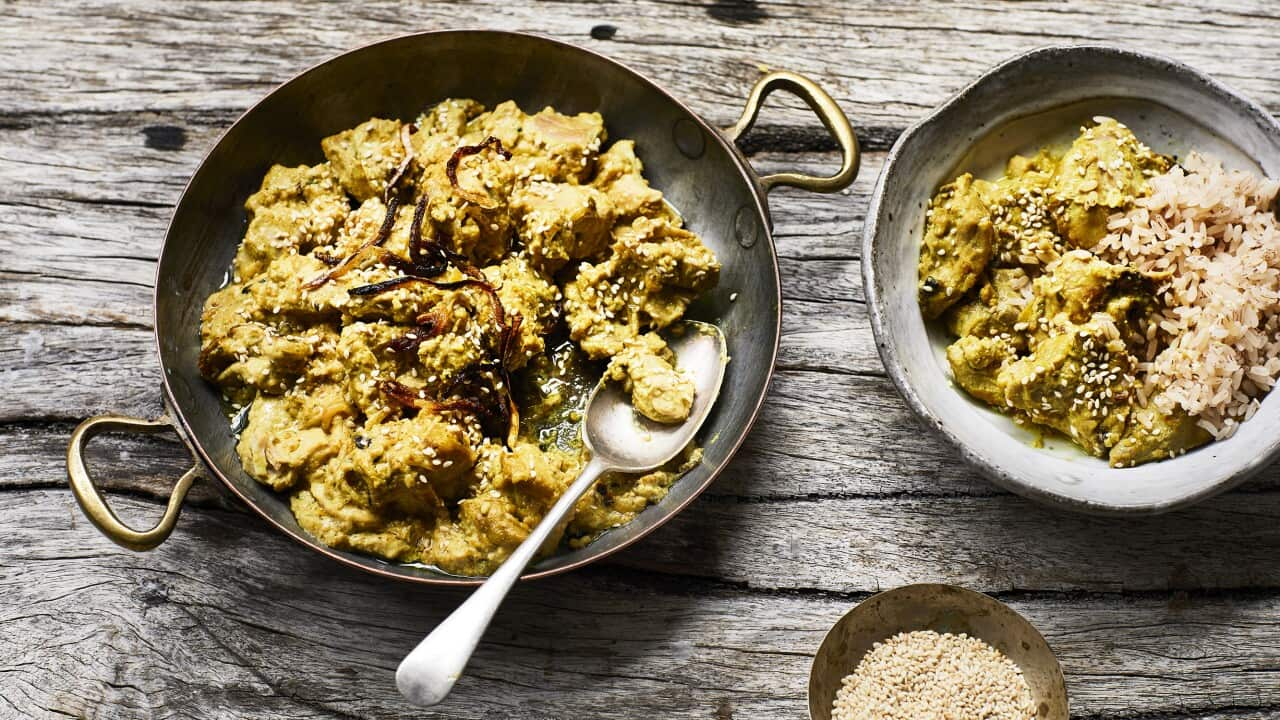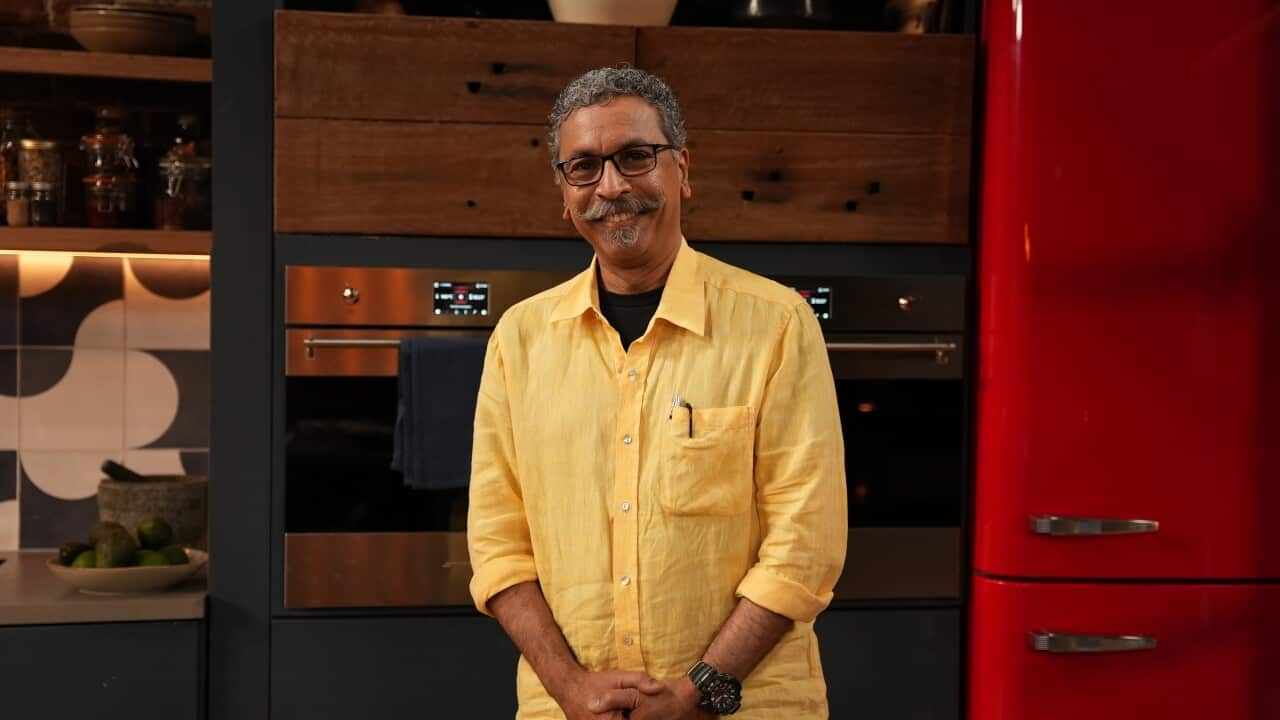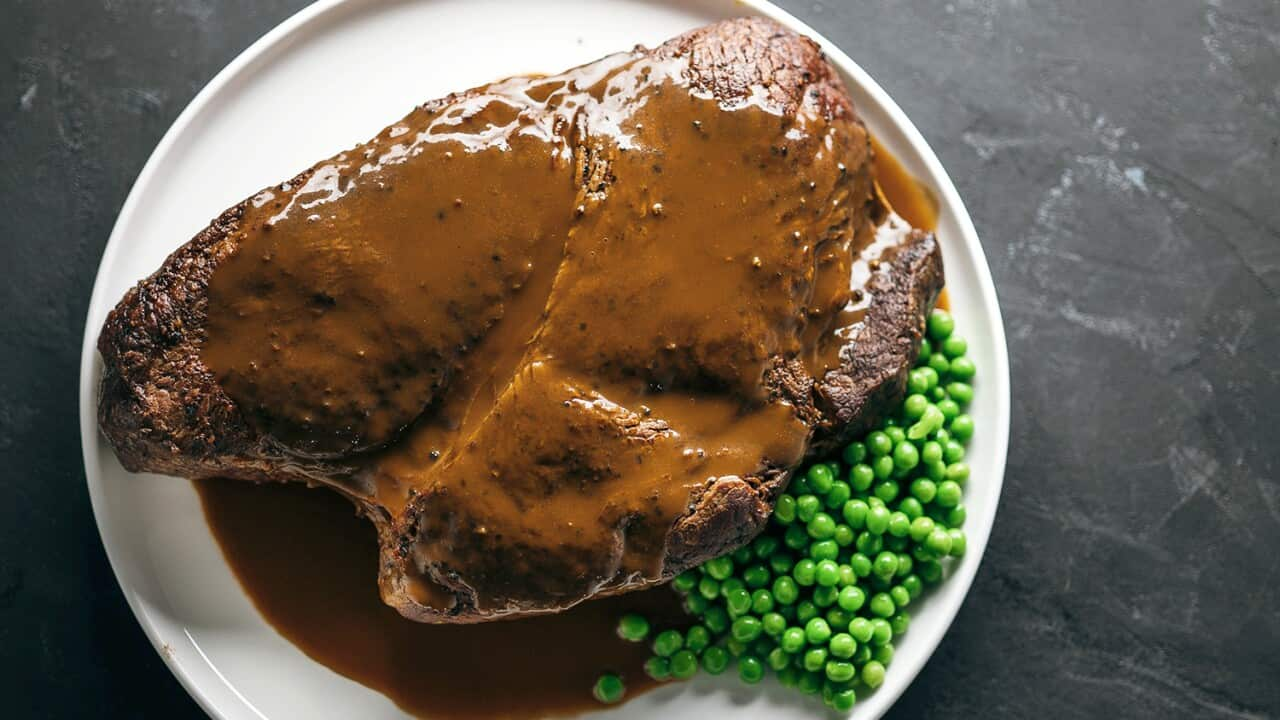--- airs weeknights on SBS at 6.00pm and SBS Food at 7.00pm, or stream it free on . Catch Ajoy Joshi in the Indian regions, ten-minute dinner, breakfast of champions, and modern Indian episodes. ---
In December 1979, Ajoy Joshi, chef and owner of Indian restaurant in Cremorne, New South Wales, went to Hyderabad in India's Telangana state, to win the favour of an Indian master chef and become his apprentice. But being discipled by this first master chef wasn't enough for Joshi. He yearned to learn as much as he could about the culinary techniques and ingredients across different regions of India.
Six master chefs later, Joshi is now a walking encyclopedia of the techniques and ingredients they imparted. He shares three lessons that he learnt from the chefs he affectionately refers to as "his masters". They are lessons that he hopes will help you prepare Indian food in your kitchen. Your sense of smell is your map
Your sense of smell is your map

Muttai kozhambu with parothas (Chettinad-style spiced eggs with parothas) Source: Adam Liaw
While Italian and French chefs generally taste as they cook, Joshi's first master advised him against it. Ingredients (like ginger, garlic, onion, turmeric, pepper) take a while to cook properly, so tasting a dish with these ingredients as you're cooking can leave your palate numb. This means you can't really taste the finished product.
We are looking for the sugar to come out of the onions which you actually can smell before you can see.
Instead, Indian chefs monitor each ingredient's transformation by smell. For example, when you are cooking with oil, many Indian chefs can tell that the oil is ready for the next ingredient when they can smell smoke and the oil becomes more viscous. This signals that the onions are ready to cook. Smelling also confirms when onions are properly caramelised. "We are looking for the sugar to come out of the onions which you actually can smell before you can see," Joshi explains.
CARAMELISED ONIONS RECIPE

How to make caramelised onions while you sleep
Spices change food's flavour, colour and texture
When and how you add spices alter a dish's flavour, Joshi explains. The same dish will taste different depending on if you grind the spices with coconut cream before adding them to heat, add spices altogether at the beginning or at the end, or add them one by one. Also, spices aren't just about flavour. For example, garam masala is used to break down protein. Joshi says, "If it's red meat, the garam masala would have a larger proportion of black cardamom and cassia, as they contain a volatile oil that will permeate through the red meat and break down the protein fibre so that when the dish is cooked, it is easy to eat."
Also, spices aren't just about flavour. For example, garam masala is used to break down protein. Joshi says, "If it's red meat, the garam masala would have a larger proportion of black cardamom and cassia, as they contain a volatile oil that will permeate through the red meat and break down the protein fibre so that when the dish is cooked, it is easy to eat."

Don't be afraid of spice. Source: SBS Food
White meat is broken down by fennel, so use a garam masala with more mace and fennel.
AJOY JOSHI RECIPE

Indian-style Hyderabadi chicken
Spices also enhance the colour of other ingredients. One of Joshi's master chefs advised adding a pinch of turmeric to water when blanching spinach, to help the spinach keep its green colour and intensify it. Similarly, adding a pinch of turmeric to tomato sauce will turn the colour bright red, and keep it this colour for longer. Forget prescribed measurements
Forget prescribed measurements

Tadka or tarka refers to the tempering (gentle frying) of spices in heated fat, either ghee or a vegetable-based oil. Source: SBS Food
In many Western recipes, ingredients are measured. One teaspoon, two-thirds of a cup, a pinch, 100 grams.
One of Joshi's masters told him something about Indian cooking that could be quite liberating: You must see a dish as something you are cooking for yourself.
If you cook a dish with the aim of making it for yourself, you'd be surprised that the dish comes out good for everyone.
This means that you choose how much of an ingredient to use, says Joshi. There is a sort of unapologetic fervour that a chef needs to have. They need to stand by the amount of garlic or salt they put in, regardless of critics.
Joshi says, "And what my master said was that if you do this 99.9 per cent of the time, if you cook a dish with the aim of making it for yourself, you'd be surprised that the dish comes out good for everyone."


















